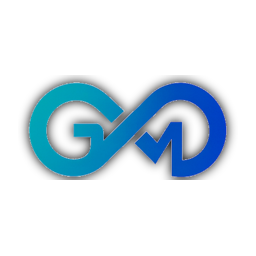Generative Mechanics
Generative Mechanics: designing Matter, guiding Making, and inspiring Mind.

A personal research lab and vision that unites generative AI (diffusion • LLMs • agents) with physics‑based modeling to understand complex materials, design proteins and alloys, and optimize additive manufacturing with agentic reinforcement learning (RL).
About
140×140
PNG/JPG
Bo Ni, Ph.D. — Founder of the GenMech Lab (personal research initiative). This site reflects my independent research vision that extends beyond roles at current and prior institutions (e.g., CMU, MIT & Brown). I explore Generative Mechanics, a rigorous partnership between learning and physical law to understand, design, and make complex materials.
Proteins • Alloys (AM) • 2D materials
Diffusion • LLMs • RL • Agents • DFT/MD/FEM/PF/CALPHAD
Predictive & creative mechanics
Vision
I aim to rebuild mechanics by coupling generative AI with physics‑based modeling. Complex materials blend deterministic laws with statistical behavior. Generative models map vast design spaces; multiscale mechanics reveals governing physics. This synthesis—Generative Mechanics—seeks a science that is both predictive and creative.
Constitutive discovery, invariants, symmetry across scales.
Physics‑in‑the‑loop inverse design for proteins, alloys, 2D materials.
Agentic RL + digital twins for robust AM optimization.
Research Highlights
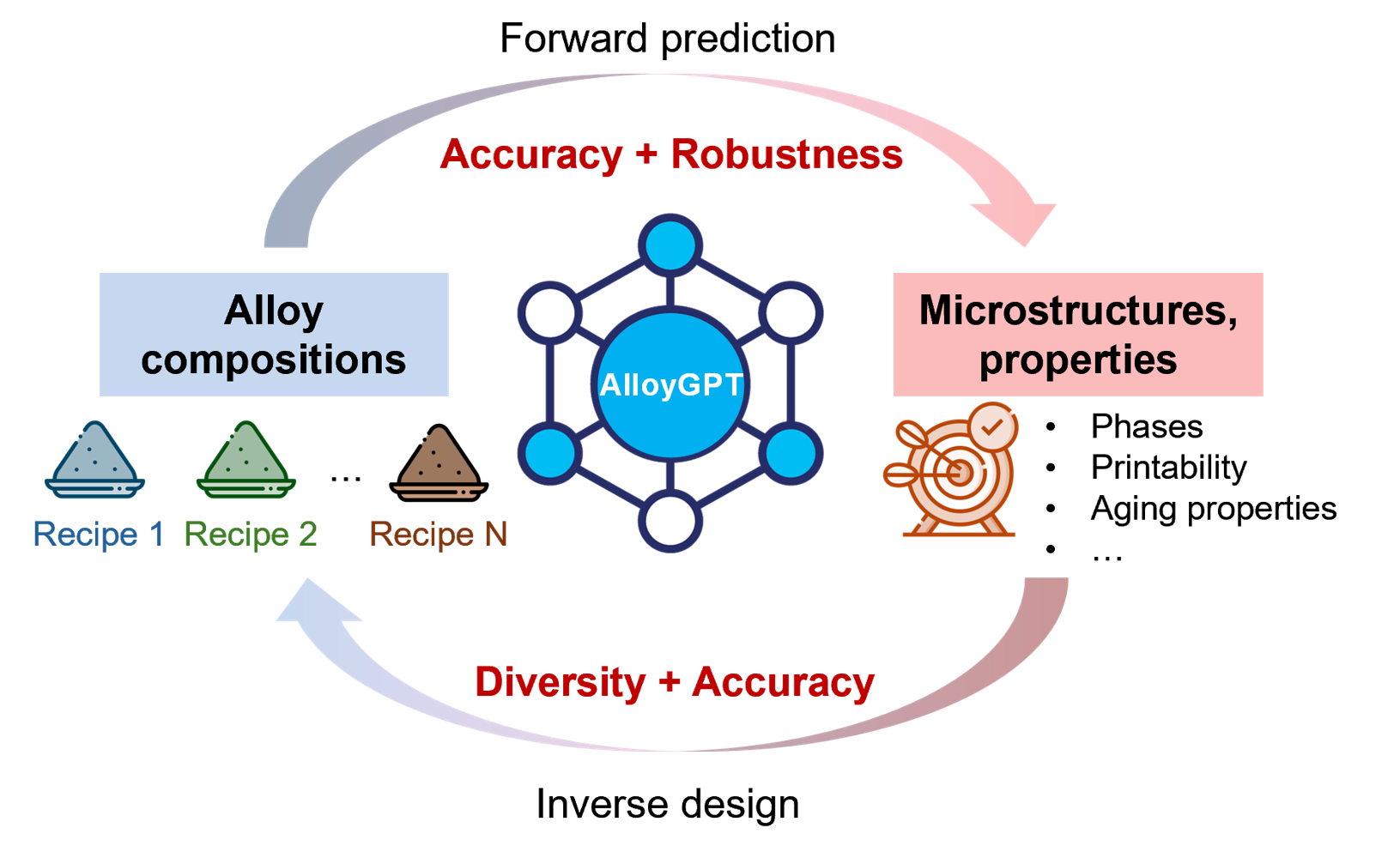
AlloyGPT for AM
End‑to‑end alloy design with LM‑driven learning + generation. npj Computational Materials (2025)
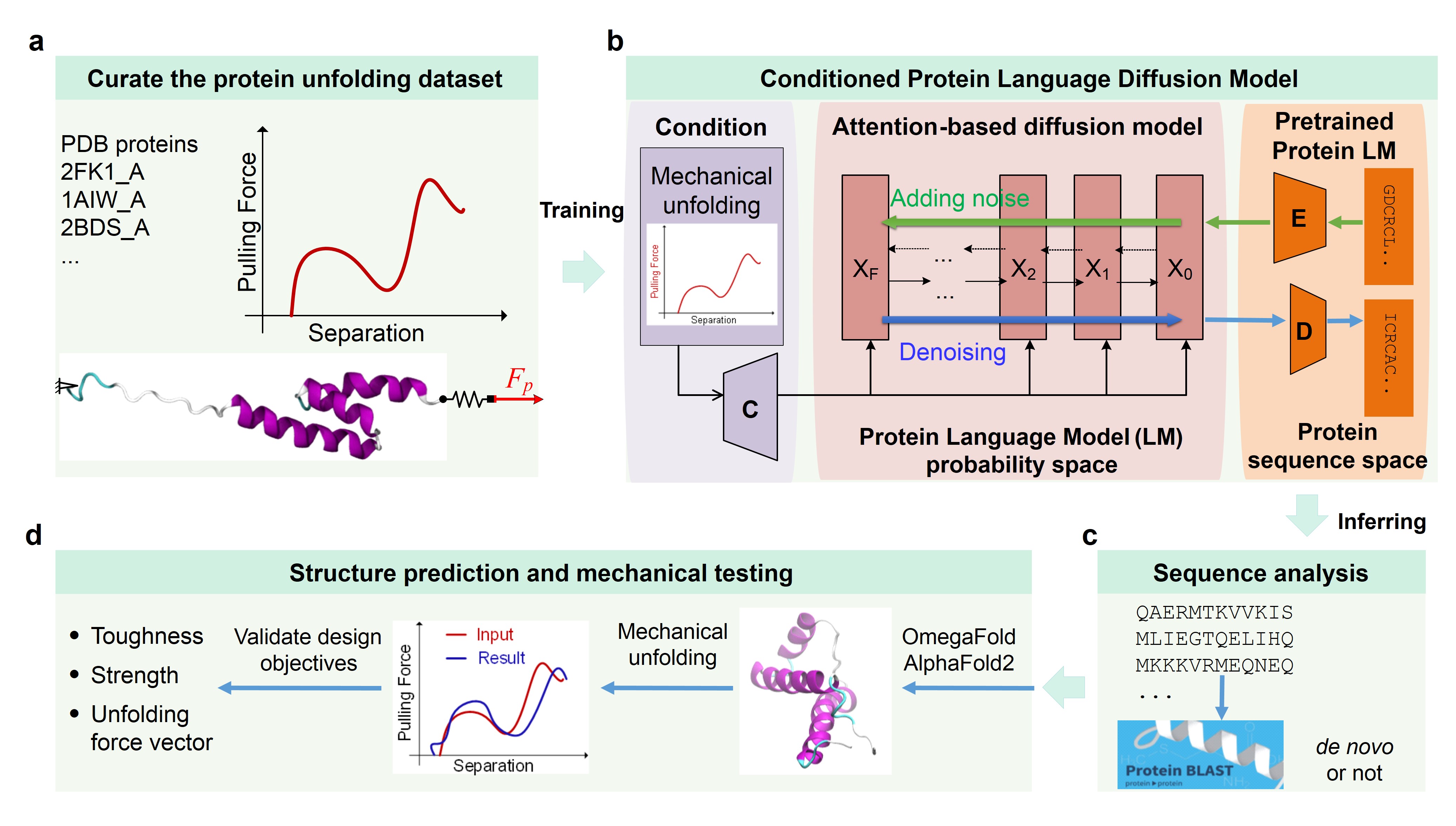
Protein generation from mechanics
End‑to‑end de novo protein generation grounded in nonlinear unfolding responses. Science Advances (2024)
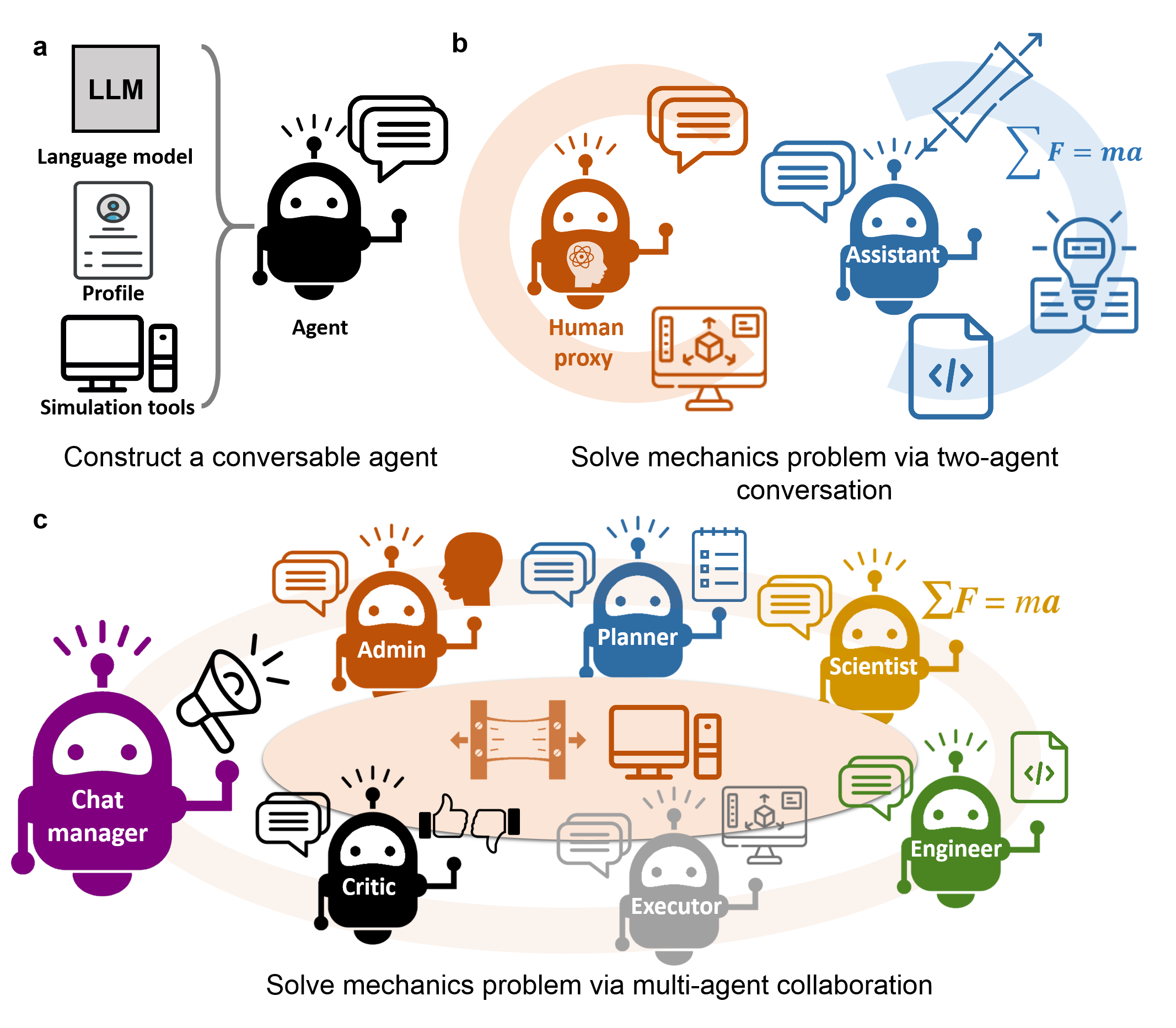
LLM multi‑agent mechanics
Teams of language agents plan, simulate, and integrate knowledge to solve mechanics problems and generate data. Extreme Mechanics Letters (2024)
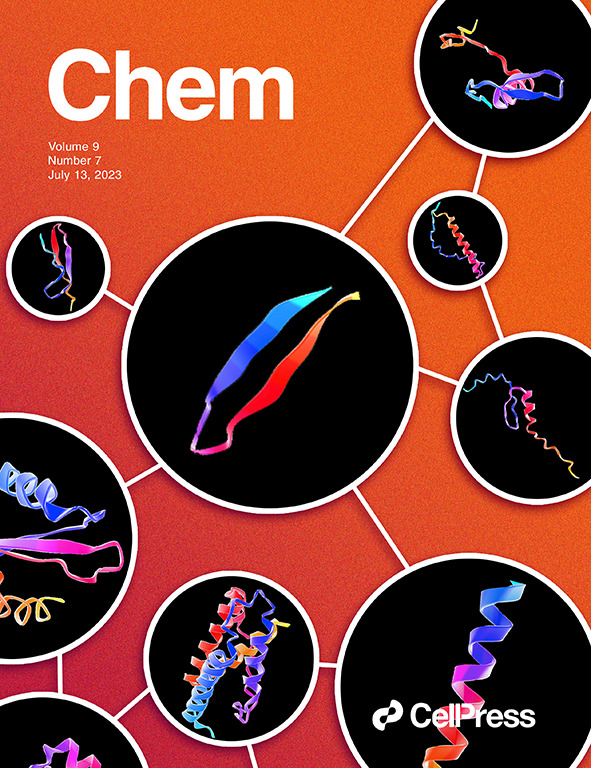
Protein diffusion design
Attention‑based diffusion under secondary‑structure constraints. Chem (2023)
Publications
- Ni, B. and Buehler, M.J., 2025. Agentic End-to-End De Novo Protein Design for Tailored Dynamics Using a Language Diffusion Model. arXiv preprint arXiv:2502.10173, under review. [code]
- Ni, B., and Taheri-Mousavi, S. M., 2025. Accelerate materials discovery and design via generative artificial intelligence, under review.
- Ni, B., Glaser, B., Taheri-Mousavi, S. M., 2025. End-to-end prediction and design of additively manufacturable alloys using a generative AlloyGPT model. npj Computational Materials, 11(1), 294. [code] (Highlighted by CMU News)
- 4.Shin, B.*, Ni, B.*, Toh C.*, Steinbach, D., Yang, Z., Sassi, L., Ai, Q., Niu, K., Lin, J., Suenaga, K., Han, Y., Buehler, M.J., Özyilmaz, B. and Lou, J., 2025. Intrinsic toughening in monolayer amorphous carbon nanocomposites. Matter. (*Co-first authors) (Highlighted by Rice News)
- Ni, B. and Buehler, M.J., 2024. MechAgents: Large language model multi-agent collaborations can solve mechanics problems, generate new data, and integrate knowledge. Extreme Mechanics Letters, 67, p.102131. [code]
- Ni, B., Kaplan, D.L. and Buehler, M.J., 2024. ForceGen: End-to-end de novo protein generation based on nonlinear mechanical unfolding responses using a protein language diffusion model. Science Advances 10(6): eadl4000. [code]
- Ni, B., Kaplan, D.L. and Buehler, M.J., 2023. Generative design of de novo proteins based on secondary-structure constraints using an attention-based diffusion model. Chem, 9(7), pp.1828–1849. (Selected as the issue cover) (Highlighted by MIT news) [code]
- Liu, F.Y., Ni, B. and Buehler, M.J., 2022. PRESTO: Rapid protein mechanical strength prediction with an end-to-end deep learning model. Extreme Mechanics Letters, 55, p.101803.
- Yang, Y., Song, Z., Lu, G., Zhang, Q., Zhang, B., Ni, B., Wang, C., Li, X., Gu, L., Xie, X. and Gao, H., 2021. Intrinsic toughening and stable crack propagation in hexagonal boron nitride. Nature, 594(7861), pp.57-61.
- Ni, B. and Gao, H., 2020. Engineer energy dissipation in 3D graphene nanolattice via reversible snap-through instability. Journal of Applied Mechanics, 87(3), p.031012.
- Guo, K.*, Ni, B.* and Gao, H., 2020. Tuning crack-inclusion interaction with an applied T-stress. International Journal of Fracture, 222(1-2), pp.13-23. (*Co-first authors)
- Ni, B. and Gao, H., 2021. A deep learning approach to the inverse problem of modulus identification in elasticity. MRS Bulletin, 46, pp.19-25.
- Li, J., Ni, B., Zhang, T. and Gao, H., 2018. Phase field crystal modeling of grain boundary structures and growth in polycrystalline graphene. Journal of the Mechanics and Physics of Solids, 120, pp.36-48.
- Hacopian, E.F.*, Yang, Y.*, Ni, B.*, Li, Y., Li, X., Chen, Q., Guo, H., Tour, J.M., Gao, H. and Lou, J., 2018. Toughening graphene by integrating carbon nanotubes. ACS Nano, 12(8), pp.7901-7910. (*Co-first authors) (Highlighted by Rice News)
- Luu, R. K., Arevalo, S., Lu, W., Ni, B., Yang, Z., Shen, S. C., Berkovich, J., Hsu, Y.-C., Zan, S., & Buehler, M. J. (2024). Learning from Nature to Achieve Material Sustainability: Generative AI for Rigorous Bio-inspired Materials Design. An MIT Exploration of Generative AI, March.
- Ni, B.*, Steinbach, D.*, Yang, Z., Lew, A., Zhang, B., Fang, Q., Buehler, M.J. and Lou, J., 2022. Fracture at the two-dimensional limit. MRS Bulletin, 47(8), pp.848-862. (*Co-first authors)
- Ni, B. and Gao, H., 2021. Breaking two-dimensional polymeric crystals. Matter, 4(3), pp.763-765.
- Ni, B. and Gao, H., 2020. Harness the power of fracture: controlled fragmentation of graphene via substrate necking. Matter, 2(3), pp.521-524.
- Ni, B.*, Zhang, T.*, Li, J., Li, X., and Gao, H., 2019. Topological design of graphene. Handbook of Graphene, Volume 2: Physics, Chemistry, and Biology, Wiley, DOI: 10.1002/9781119468455.ch19. (*Co-first authors)
Under review and preprints
Research articles
Reviews and previews
Book chapter
Contact
Email:
General inquiries, media, and academic/industry discussions are welcome.
